How the Swiss Air Force struggled to grow wings
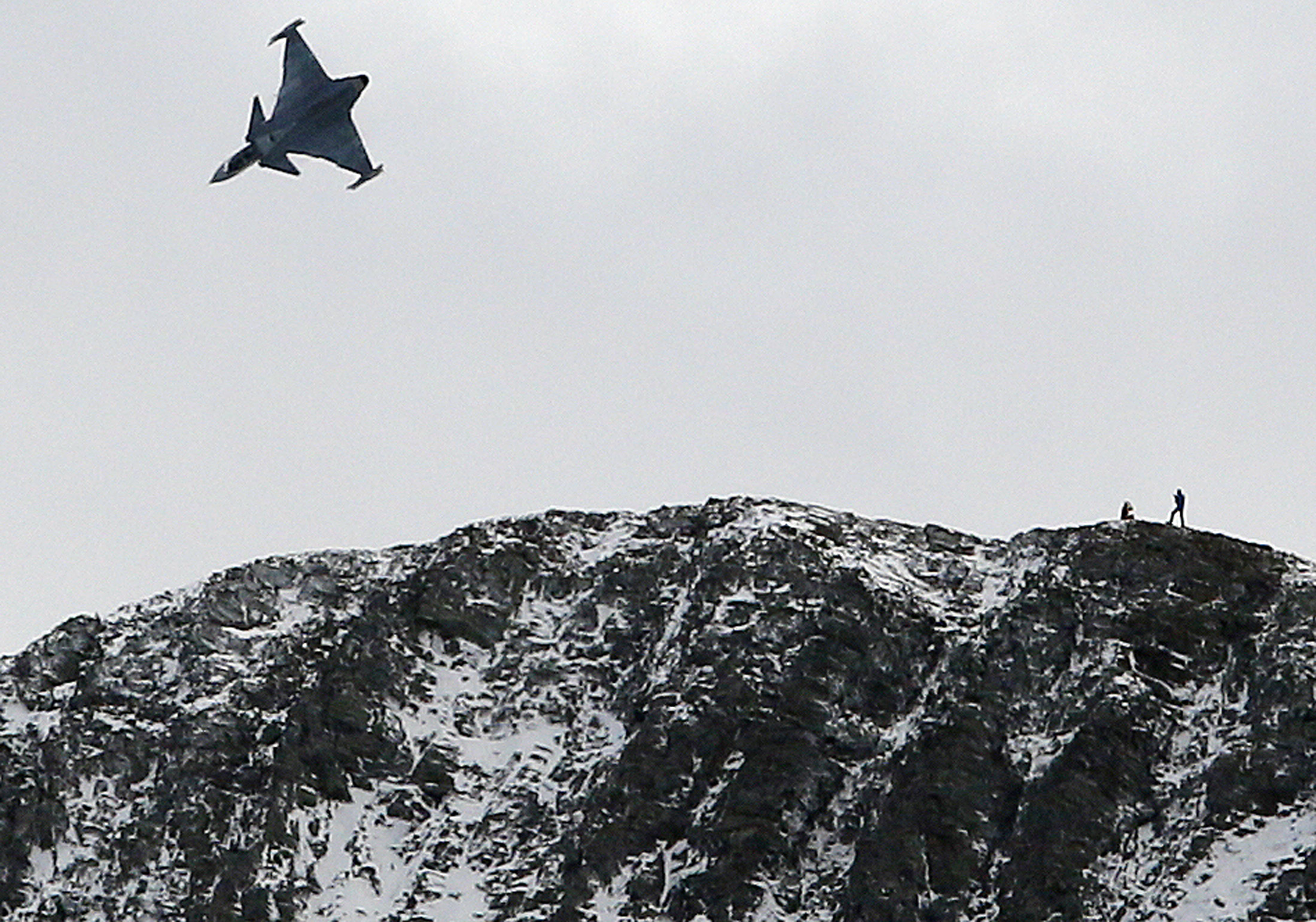
The controversy over Switzerland’s plans to purchase new fighter jets is set to drag on for some time. A look back at the country’s military history shows nearly all aircraft purchases were divisive and hotly contested.
As the cabinet is about to present the latest next draft armament programme – including a SFr3.1 billion ($3.3 billion) for the purchase of 22 Swedish Gripen fighters to be discussed by parliament over the next year – the defence ministry has come in for plenty of flak.
Not only pacifist groups and leftwing political parties – as could be expected – have been giving Defence Minister Ueli Maurer a hard time.
A parliamentary committee, various lobby groups, air force pilots, certain media and even the presidents of the main centrist parties have criticised either the evaluation procedure or the choice of the Gripen plane over two other competitors. They have raised questions about the terms of the deal with the Swedish Saab company and the official information policy.
What might get forgotten amidst all the heated debates about the Gripen is that the history of aircraft purchases for the Swiss Air Force is riddled with setbacks and scandals from the very beginning 100 years ago.
Controversies about aircraft purchases are by no means a particularly Swiss phenomenon, says Roman Schürmann, author of a book on the history of the country’s military aviation history.
“Nearly all fighter jet acquisitions were dramatic stories. It led to epic discussions at a political level, in the media and among the population,” says Schürmann, a journalist for the left-leaning weekly, Wochenzeitung.
Big money
The main reasons for the big interest is primarily the huge amount of money involved and there is also a strong emotional side. The general public are fascinated by the technical aspects of military aviation.
But economic and financial factors as well as the political context of the planned purchases always played a key role, says Schürmann.
Researching and writing his book he was surprised to what extent the issue of money – at the expense of military strategies – defined the decisions by the politicians – and not only those on the left.
“The financial aspect has always had priority – and the planned acquisition of Gripen aircraft is no exception,” he says.
Hans-Ulrich Jost, a retired history professor at Lausanne University and former air force pilot sums up the history of aircraft purchases as “popular Swiss dramas which keep the public in suspense for quite some time”.
He points out the confusion among the political and military leadership, notably in the 1960s.
“One can’t help being impressed by the naivety, factual ignorance and conceptual confusion of the protagonists,” Jost says.
Differences of opinion also led to the cancellation of a deal for the purchase of US Corsair fighter aircraft a decade later.
Difficult start
From the very outset in 1913 it was no easy ride to buy planes. A public campaign raised enough funds to acquire up to ten aircraft on the eve of the First World War, but the money was used up for travel expenses and test flights.
Emotions were running high when Switzerland actually bought its first planes in 1929. There were concerns over the costs, but notably trade unions were pleased with the prospect of jobs created by assembling the French aircraft under licence in Switzerland.
Not uncontested was Switzerland’s purchase of Messerschmitt fighter aircraft from Nazi Germany during the Second World War.
Switzerland’s attempt to build its own fighter jet ended abruptly at the end of the 1950s marking the end of the dream of a military jet aviation industry similar to neutral Sweden.
At the time, the cabinet withdrew its order for about 100 machines of the P-16 aircraft by a private company in Altenrhein in eastern Switzerland. The decision – much to the regret of many aviation buffs – was triggered by the crash of two prototypes in Lake Constance.
“It became obvious that the construction of military aircraft was too costly for a small country,” says Schürmann.
Crisis
Arguably the biggest blow was the scuffle over the acquisition of Mirage fighter jets from France in the early 1960s. Massive overspending led to a sizeable reduction in orders and ultimately to the resignation of the defence minister.
“The Mirage scandal went beyond military history. A more realistic policy replaced concepts of armed forces with offensive potential,” explains Schürmann.
The scandal also prompted a reform of the procurement system. Schürmann believes the evaluation process became more professional and transparent.
Jost agrees the technical evaluation was improved, but he points out the involvement of political and economic aspects, particularly the role of the state-owned armament company.
An exception in Swiss military aviation history was the purchase of 160 British Hawker Hunter fighter jets. They were bought without major hick-ups during the evaluation process, for a relatively low price.
“It was a robust aircraft which did quite well in the Swiss context,” says Jost.
Unfazed
This time around, Defence Minister Maurer appears unfazed by any criticism of the Gripen choice. At a news conference during a visit to tank divisions in Thun last August, Maurer patiently defended the Gripen, saying it meets all military requirements.
“It is a pragmatic Swiss solution and allows us to use taxpayers’ money efficiently,” he said.
Referring to Swiss aircraft history, Maurer seemed to take comfort in the fact that virtually all evaluation procedures have taken their time.
Schürmann believes the controversies of the past 18 months are signs of things to come.
“The discussions will flare up again every time the issue is in the news, and the media hype will continue up to a potential nationwide vote. But I don’t think it will be at a level of the Mirage scandal, the F/A 18 purchase in the 1990s or the P16 story.”
The Swiss Air Force was established in 1914 with a few men flying mainly civilian aircraft.
It became an autonomous military unit in 1936.
In an initial phase Switzerland bought aircraft from neighbouring France and Germany before and during the Second World War.
The first fighter jets – Venoms and Vampires – were bought from Britain after the war, as was the Hawker Hunter in the 1960s.
Switzerland also tried to build its own fighter P-16 aircraft at the height of the Cold War era, but abandoned the plans.
The current fleet of F-5 Tigers and F/A-18 Hornets were assembled in Switzerland under US licence.
Switzerland’s frontline air force currently consists of 33 F/A18 Hornet and 54 F5 Tiger aircraft.
The Tiger fleet is to be replaced by 22 JAS39 Gripen jets.
The air force also includes Pilatus trainer aircraft and more than 40 Eurocopter helicopters, as well as drones and special transport planes.
The Swedish Gripen was in competition with the Rafale by France’s Dassault and the Eurofighter by the European EADS consortium.
The pacifist Switzerland Without An Army group wanted to impose a moratorium on fighter jet acquisitions, but the initiative was rejected.
Centre-left parties have said they will challenge parliamentary approval of a SFr3.1 billion credit for the aircraft to a nationwide vote.

In compliance with the JTI standards
More: SWI swissinfo.ch certified by the Journalism Trust Initiative

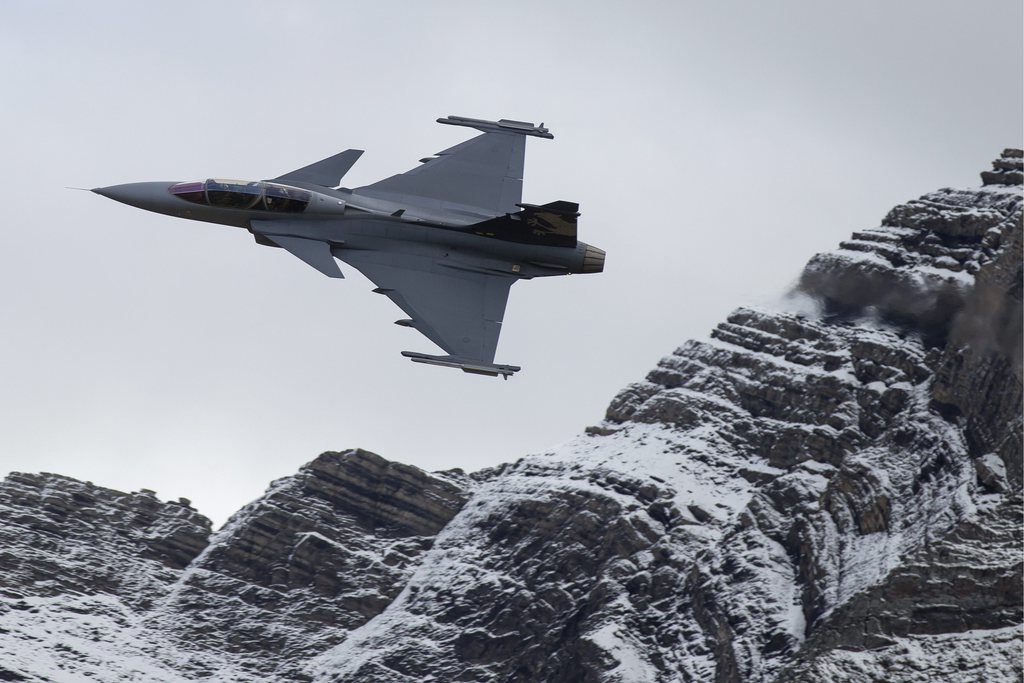
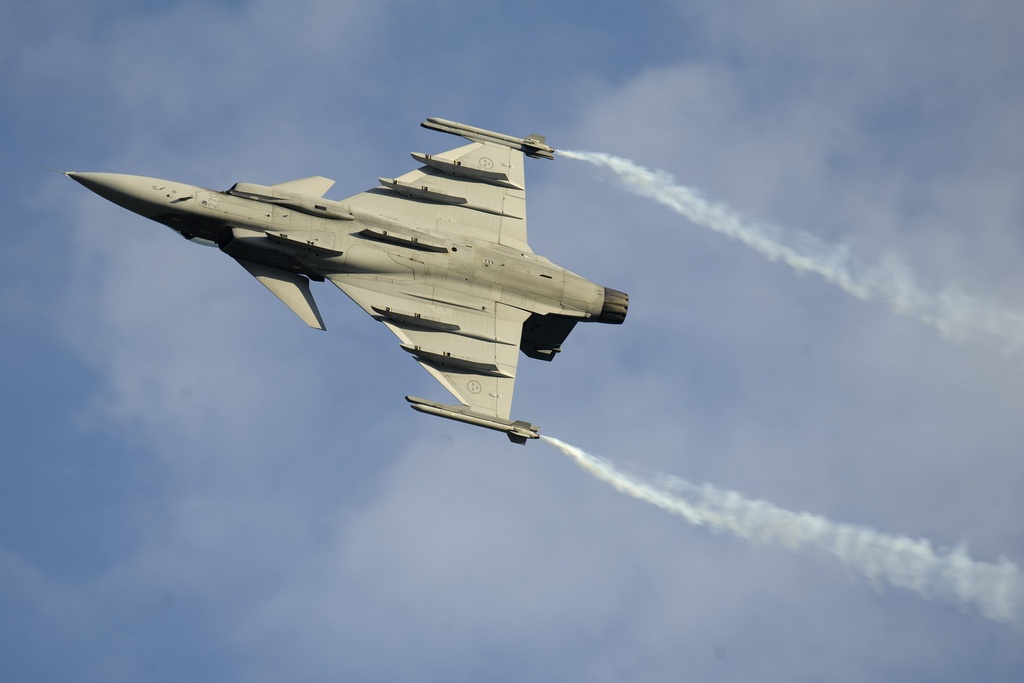
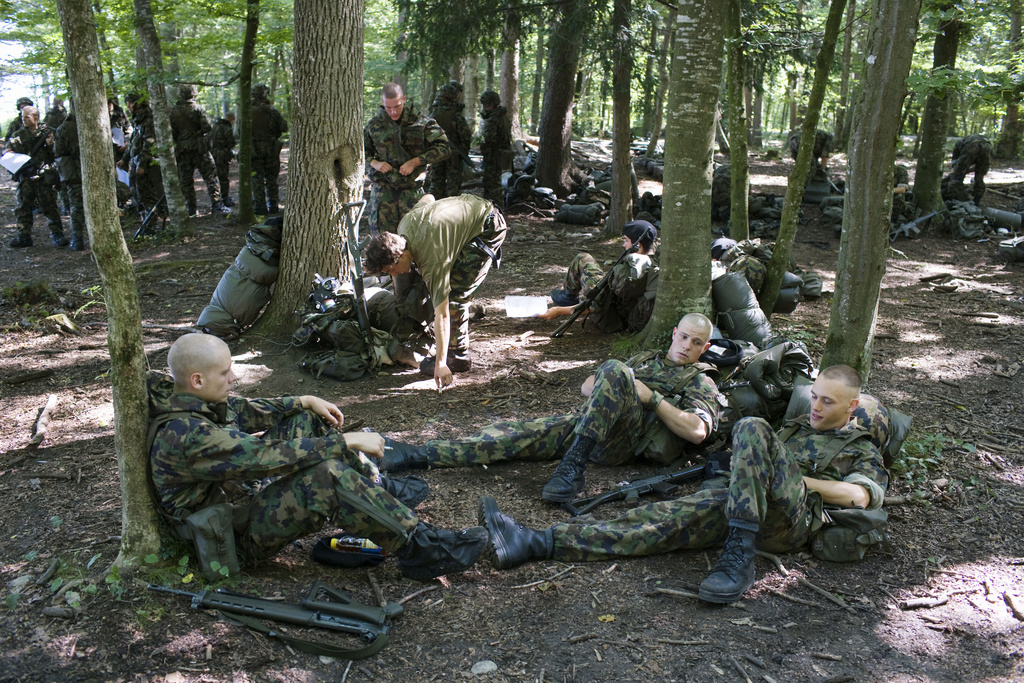
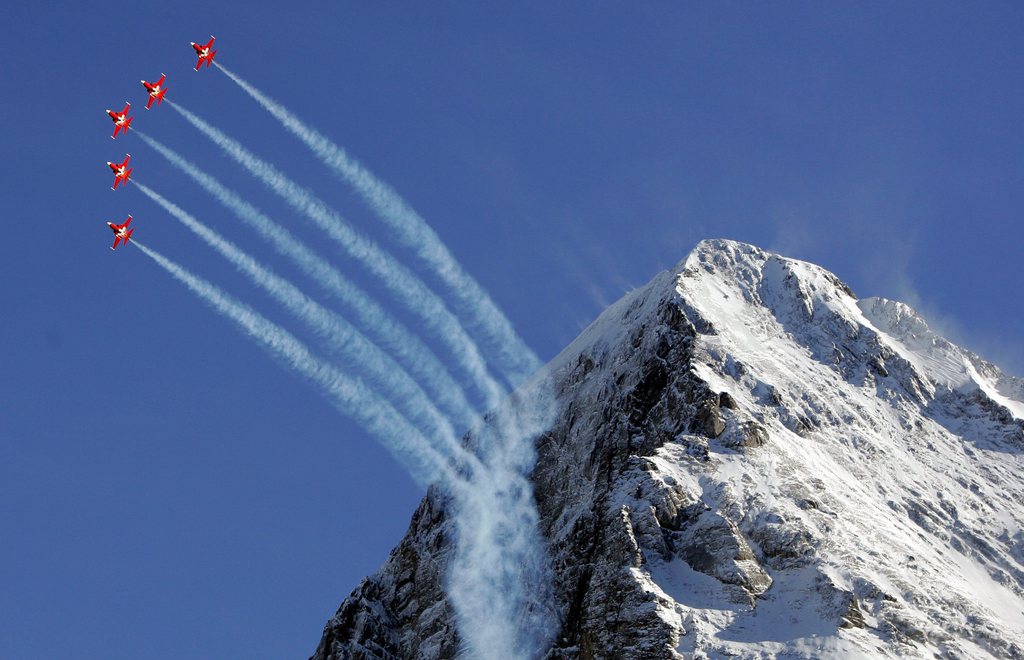
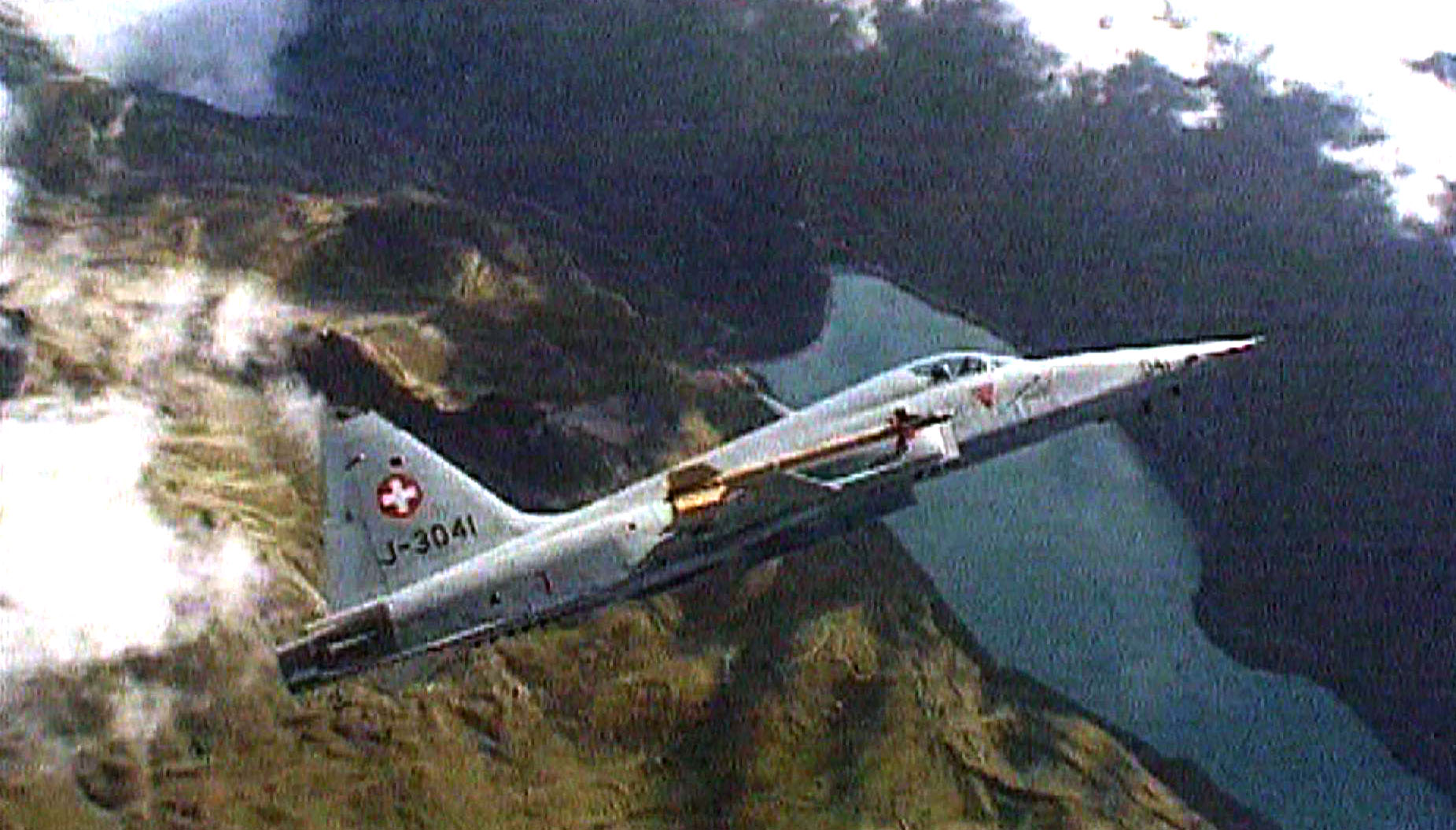
You can find an overview of ongoing debates with our journalists here. Please join us!
If you want to start a conversation about a topic raised in this article or want to report factual errors, email us at english@swissinfo.ch.